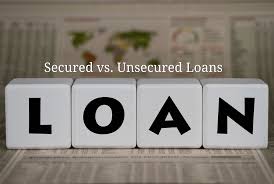When applying for online loans in Australia, one of the fundamental eligibility criteria that applicants must meet is related to their age. While the digital nature of online lending makes access more convenient, it doesn’t bypass the legal and responsible lending obligations that govern credit provision. Age requirements for online loan applications are a non-negotiable aspect, designed to protect both lenders and borrowers. This comprehensive guide will detail the standard age criteria in Australia, explore the reasons behind these requirements, discuss any nuances for different age groups (younger and older applicants), and provide essential advice for navigating the application process regardless of age.
The Standard Age Requirement in Australia
The universal legal minimum age to enter into a binding credit contract (including online loans) in Australia is 18 years old. This is consistent across all types of credit, whether from traditional banks, credit unions, or online lenders, and applies to both secured and unsecured loans.
Why 18? The age of 18 is legally recognised as the age of majority in Australia. At this age, an individual is deemed:
- Legally Capable: To enter into contracts, including financial agreements.
- Financially Responsible: Assumed to have the capacity to understand the terms, conditions, and implications of borrowing money.
- Adult Citizen: Granted the full rights and responsibilities of an adult, including managing their own finances.
Any loan agreement entered into by a minor (under 18) is generally unenforceable by the lender, which is why lenders strictly adhere to this minimum age.
Beyond the Minimum: Age-Related Considerations for Lenders
While 18 is the absolute minimum, lenders (especially for online loans) often have additional, unstated, or indirectly applied age-related considerations, driven by their responsible lending obligations and risk assessment models.

For Young Adults (18-25 Years Old):
While legally eligible, young adults may face specific challenges:
- Limited Credit History: Many young adults have a “thin” credit file, meaning they haven’t had much exposure to credit (e.g., credit cards, previous loans). This lack of history makes it harder for lenders to assess their repayment behaviour and risk, even if they have a perfect record.
- Lower Income/Job Stability: Young adults might be in entry-level jobs, part-time work, or still pursuing education, leading to lower or less stable income, which can impact affordability assessments.
- Higher Risk Perception: Statistically, younger borrowers may be perceived as higher risk due to less financial experience or a greater likelihood of financial changes (e.g., career changes, moving out of home).
Tips for Young Applicants:
- Build Credit Responsibly: Start building a positive credit history early with a small credit card (and pay it off in full monthly), or a mobile phone plan.
- Demonstrate Income Stability: If employed, try to show consistent income over several months.
- Provide Comprehensive Information: Be transparent about your income, expenses, and any existing debts to help the lender fully understand your financial situation.
- Start Small: Consider applying for smaller loan amounts initially to build a positive repayment history.
For Older Applicants (Retirees or Approaching Retirement):
Older Australians, particularly those in or approaching retirement, might also encounter specific considerations from online lenders:
- Income Source: Lenders will scrutinise income sources. While superannuation, pensions (including Centrelink payments), and investment income are generally acceptable, their consistency and sufficiency for loan repayments will be paramount. Some lenders might have minimum income requirements that are harder to meet solely on Centrelink payments.
- Loan Term: Lenders might be hesitant to offer very long loan terms that extend significantly beyond a borrower’s expected working life or into very old age, especially for unsecured loans. They need assurance that repayments can be sustained.
- Debt-to-Income Ratio: Existing debt levels, particularly if they are high relative to retirement income, can be a concern.
- Responsible Lending Review: ASIC’s responsible lending guidelines are particularly stringent for potentially vulnerable borrowers, which can include older individuals who might be more susceptible to undue hardship if a loan is unsuitable.
Tips for Older Applicants:
- Clear Income Documentation: Provide clear and comprehensive documentation of all income streams (superannuation statements, pension statements, investment income records, bank statements showing regular deposits).
- Demonstrate Affordability: Present a clear budget showing how the loan repayments fit comfortably within your retirement income.
- Consider Secured Options (if applicable): If appropriate and risks are understood, offering security (e.g., a car, though not usually for online loans themselves) might broaden options for some types of credit, though not typically for standard online personal loans.
- Seek Financial Advice: For significant financial decisions, especially if you’re approaching or in retirement, consulting a financial advisor or a free financial counselling service is highly recommended.
Beyond Age: Other Universal Eligibility Criteria for Online Loans
While age is a fundamental starting point, online loan providers in Australia will assess a range of other criteria to comply with responsible lending obligations:
- Australian Residency: You must typically be an Australian citizen or permanent resident, or hold a valid long-term visa.
- Stable Income: Demonstrated capacity to repay the loan through regular employment income, self-employment income, or eligible government benefits. Lenders will verify this (often via secure bank statement access).
- Credit Score and History: A healthy credit score and a history of responsible borrowing are crucial for competitive rates and quick approval. Lenders use your credit report to assess your past repayment behaviour.
- Expenses and Liabilities: Lenders assess your current financial commitments (rent/mortgage, other loan repayments, living expenses) to ensure the new loan won’t cause undue hardship.
- Contact Information: Valid phone number and email address for communication.
- Bank Account: An active Australian bank account for loan disbursement and repayment.
Navigating the Online Loan Application Process
Regardless of your age, a smooth online loan application process involves:
- Preparation: Gather all necessary documentation: Australian ID (Driver’s Licence/Passport), bank account details, employment details, and income/expense figures.
- Honesty: Always provide accurate and truthful information. Misleading information will lead to rejection and could be recorded on your credit file.
- Secure Verification: Be prepared to grant secure, read-only access to your bank statements (via Open Banking/CDR) for rapid income and expense verification. This is generally the fastest and most preferred method for online lenders.
- Understand Terms: Carefully read the loan contract, especially the comparison rate, fees, and repayment schedule, before electronically signing.
- Check ACL: Always ensure the online lender holds a valid Australian Credit Licence (ACL) from ASIC. This confirms they are regulated and adhere to responsible lending laws.
Conclusion: Age as a Foundation, Not a Barrier
Age requirements for online loan applications in Australia are strictly enforced, with 18 years being the legal minimum for entering any credit contract. While this threshold is universal, online lenders apply a nuanced assessment that considers other age-related factors, such as credit history for younger applicants and income source/loan term for older borrowers. The overarching principle for all age groups remains responsible lending: ensuring the loan is suitable and affordable. By being prepared, transparent, and proactive in managing their financial profile, Australians of all eligible ages can effectively navigate the online loan landscape and access finance responsibly.














